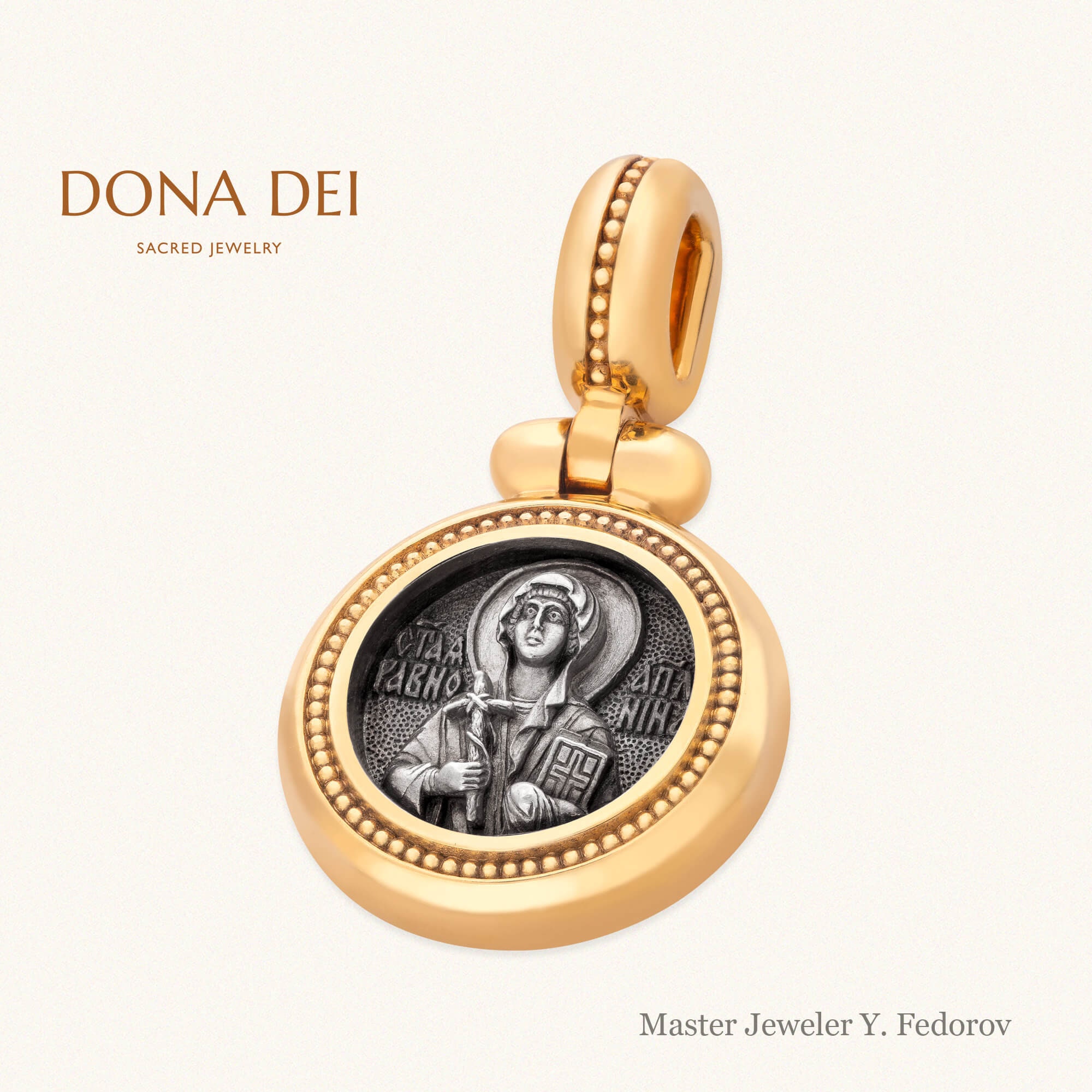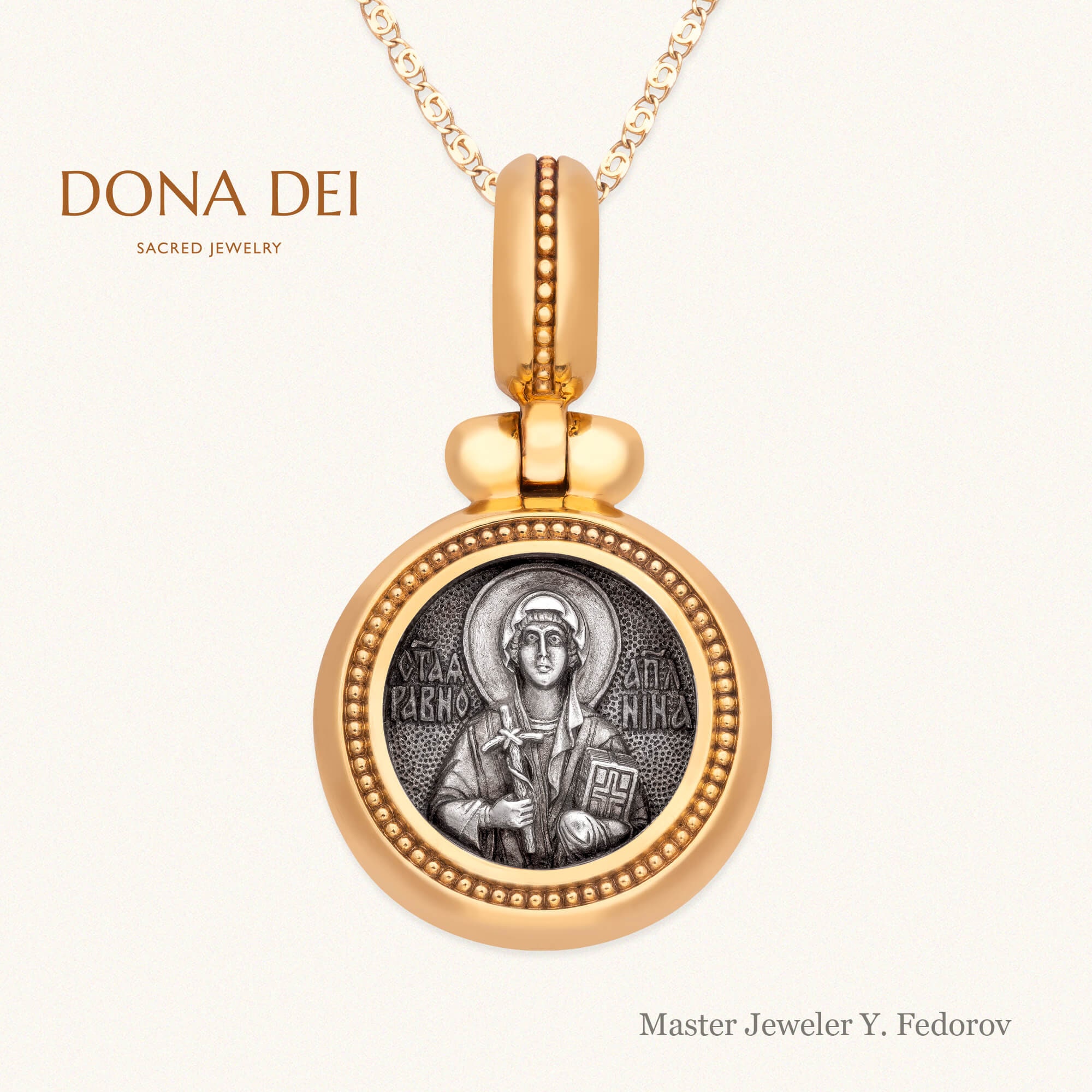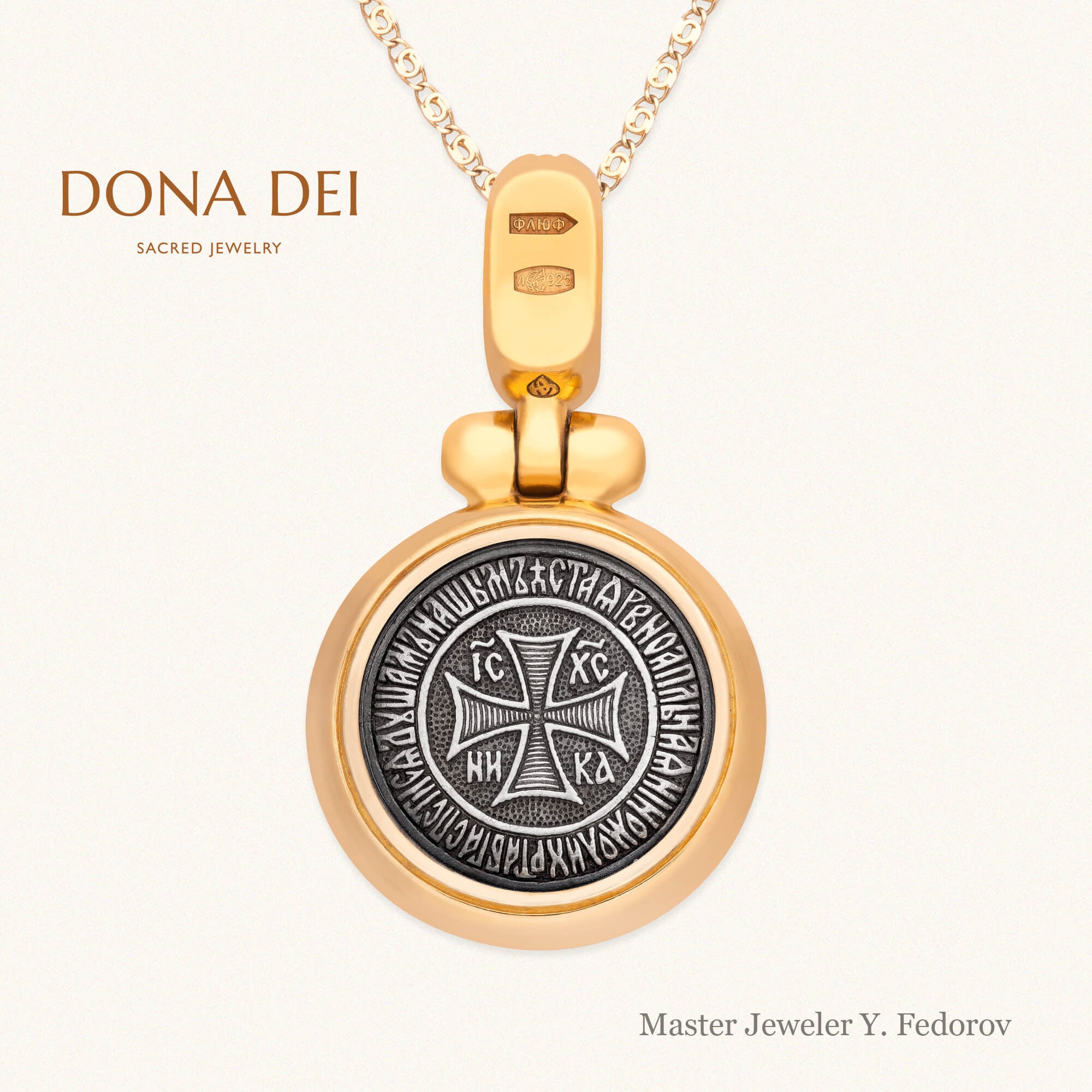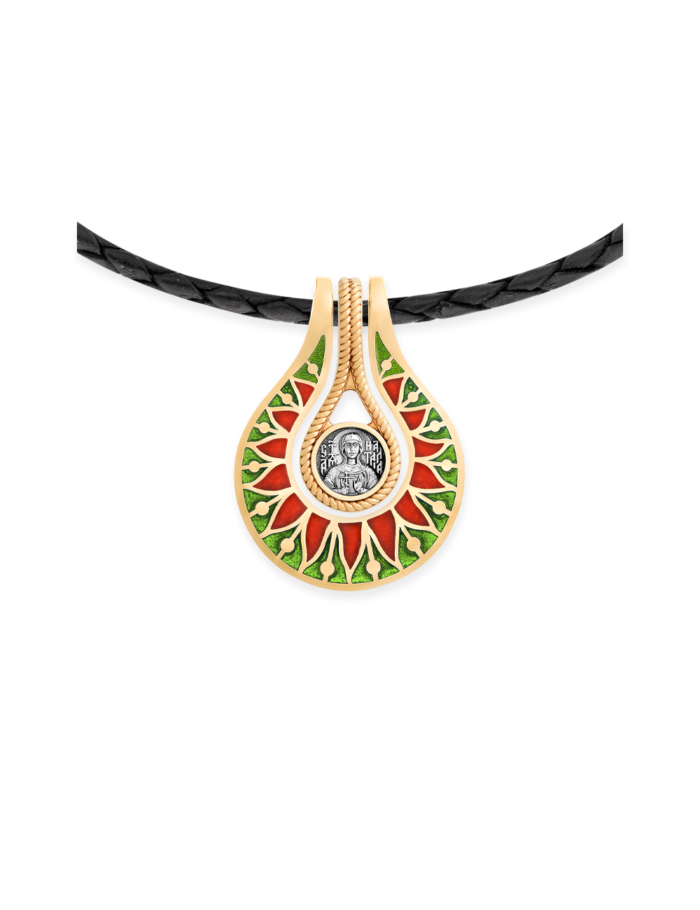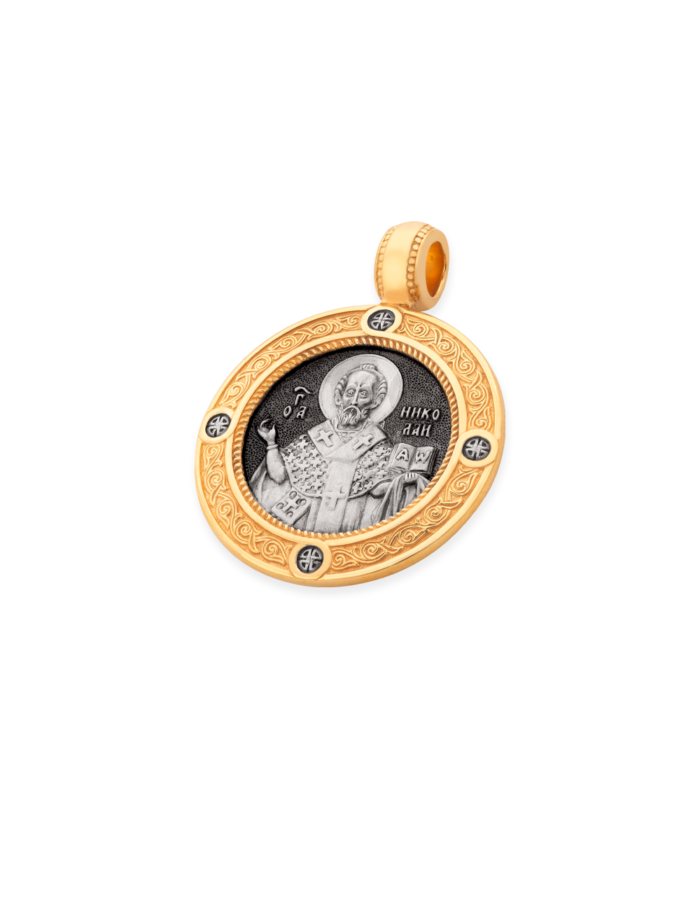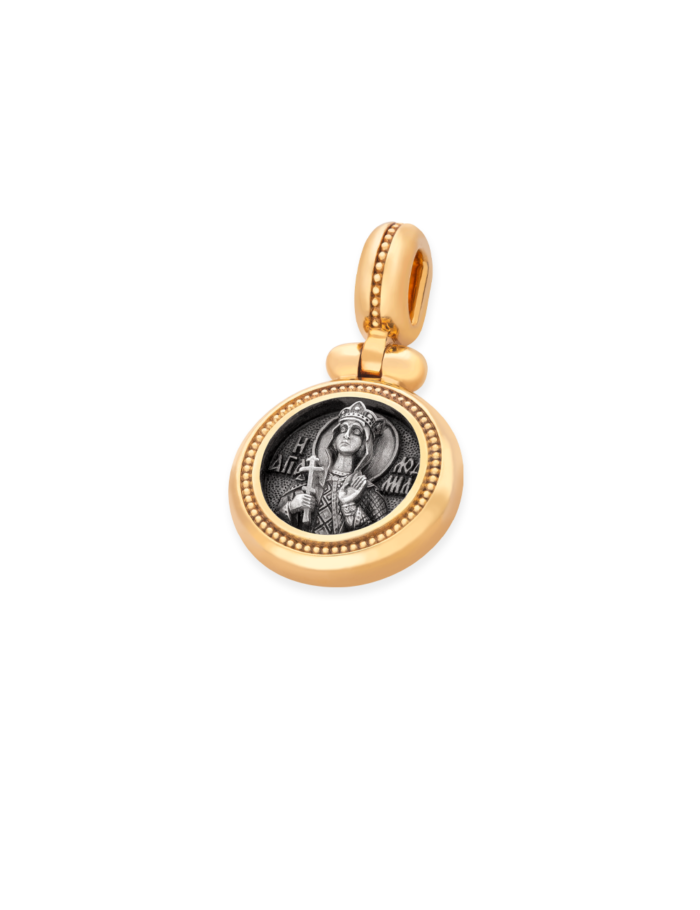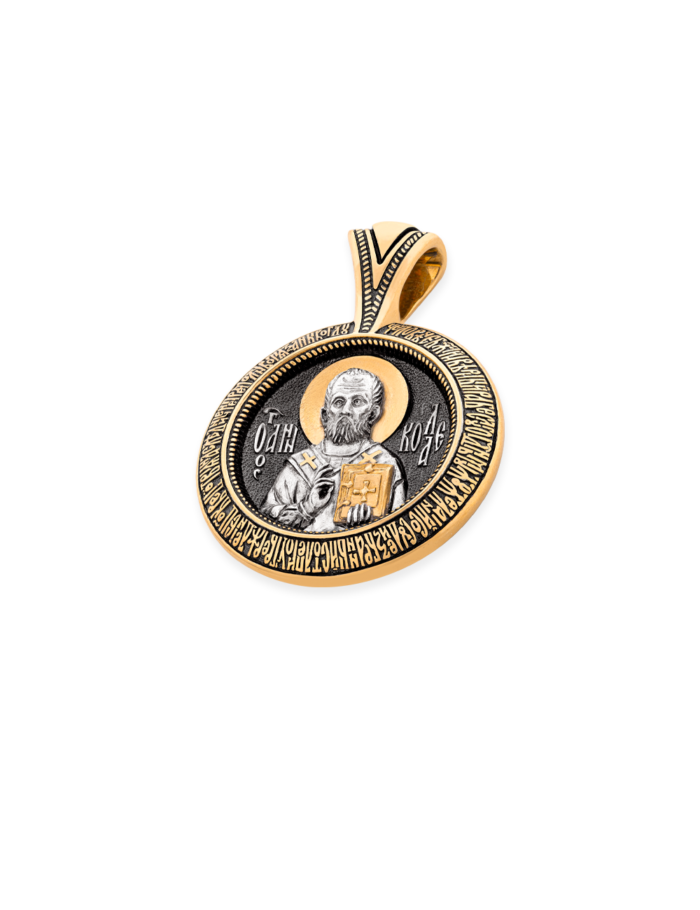Description
Size: 23 × 13 mm / 0.91 × 0.51 in
Weight: ~ 3,8 g / 0.13 ozIcon pendant “St. Nino, Equal of the Apostles”
This miniature scapular is a great gift for someone who wishes to have a portable icon of their patron saint. Due to its small size, the icon pendant “St. Nino, ...Equal of the Apostles” is inconspicuous and convenient to wear. It can easily be concealed under one’s clothes or be worn on a casual basis without attracting undue attention.
The symbolism of the icon pendant “St. Nino, Equal of the Apostles”
The round scapular contains a relief image of St. Nino, Equal of the Apostles, Enlightener of Georgia. The saint is depicted according to the traditional iconography. In her right hand, she is holding a cross made from a grapevine, the so-called “Cross of St. Nino”. Her left hand is holding the Gospel.
St. Nino was born about 280 in a region of Cappadocia in Asia Minor where there were many Georgian settlements. Her title, Equal of the Apostles, indicates that, like the disciples of Christ, she preached Christianity to the Georgian people. The father of the saint was a certain Zabulon, a relative of the Great Holy Martyr George. Her mother, Susanna, was the sister of the Patriarch of Jerusalem. When Nino was 12 years old, her family moved to Jerusalem. There, by mutual consent and with the blessing of the patriarch, her parents dedicated themselves to God. Zabulon became a monk in the Jordanian desert, while Susanna became a servant at the Church of the Holy Sepulcher. While she lived in the Holy Land, Nino prayed a lot for the Lord to enlighten Georgia with the light of truth. One night, the Mother of God appeared to her in a dream. The Theotokos blessed her to preach Christ’s faith in Georgia and handed her a cross woven from a grapevine. When Nino woke, she saw the cross in her hand. The cross is still kept in the Cathedral of Zion in Tbilisi as the greatest shrine. The saint, fortified with such an omen, traveled to Georgia. She had to endure much misfortune from the pagan king and the priests. As she preached the one true faith, St. Nino converted them and many other people into Christianity. Once her apostolic ministry was complete, St. Nino received a sign that her life was about to end. The Georgian king, the bishop, and numerous believers came to bid her farewell. After partaking in Holy Communion, St. Nino peacefully fell asleep in the Lord. A church was subsequently erected at the site of her repose.
The reverse of the scapular depicts an equilateral cross with widening bars inside a central circle. Crosses in this shape have been known in Byzantium since the times of Emperor Constantine. In Georgia, they came to enjoy a particular reverence and became widely popular from the 5th century onward. They were known as Bolnisi crosses, after the name of Bolnisi Zion, the first Christian basilica in Georgia. The basilica, which is situated at a distance of 70 km from Tbilisi, has this cross depicted on the facade. Inscribed around the Bolnisi cross is the prayer to St. Nino in Church Slavonic.
The memory of St. Nino, Equal of the Apostles, is celebrated on 27 (14) January.
Technical details of the icon pendant “St. Nino, Equal of the Apostles”
The icon pendant is round, with a relief image decorated with blackening. It is fashioned from grade-925 sterling silver and covered in 24k gold at the top and around the rim. The top part of the icon has a movable hoop for a chain. The pendant is quite small, with a size of 0.91 × 0.51 in (23 × 13 mm) and weighs 0.13 oz (3.8 g). This makes it comfortable to wear either on or under one’s clothes.
About Master Jeweler Yuri Feodorov
Yuri Feodorov has spent over 35 years working with small sculptural items of an iconographic nature. He has created several collections of personally sacred items produced using a special casting technique, including cross pendants, scapulars, and foldable icons. In addition, the artist has studied ancient Russian and Byzantine art and participated in archaeological expeditions and thematic exhibitions of Orthodox artwork.
Y. Feodorov’s collection is constantly exhibited at jewelry exhibitions and exhibitions of Orthodox items in Russia and abroad.
The artist’s work has received numerous awards, including several orders from the Carl Faberge Memorial Foundation. Y. Feodorov has repeatedly received incentives from the Russian Orthodox Church and the Ministry of Culture of the Russian Federation and won prizes at various exhibitions and contests.
It is important to mention that this item is made in Y. Feodorov’s workshops and together with the hallmark imprinted on the item it also has the passport of authenticity (shown in the picture).







